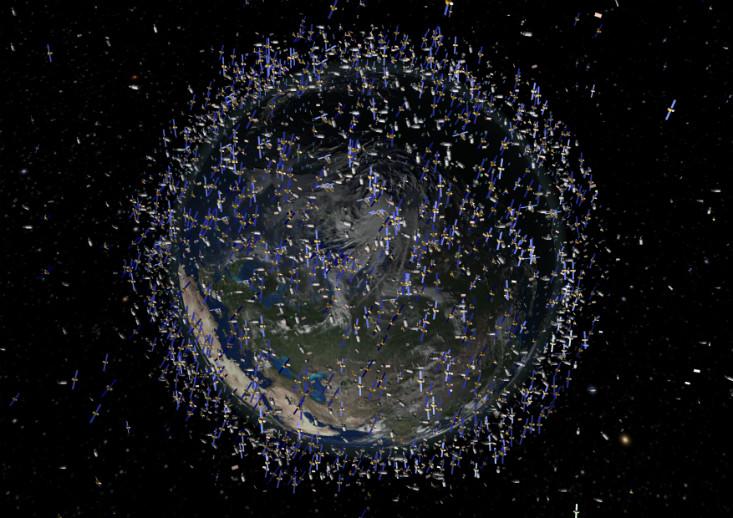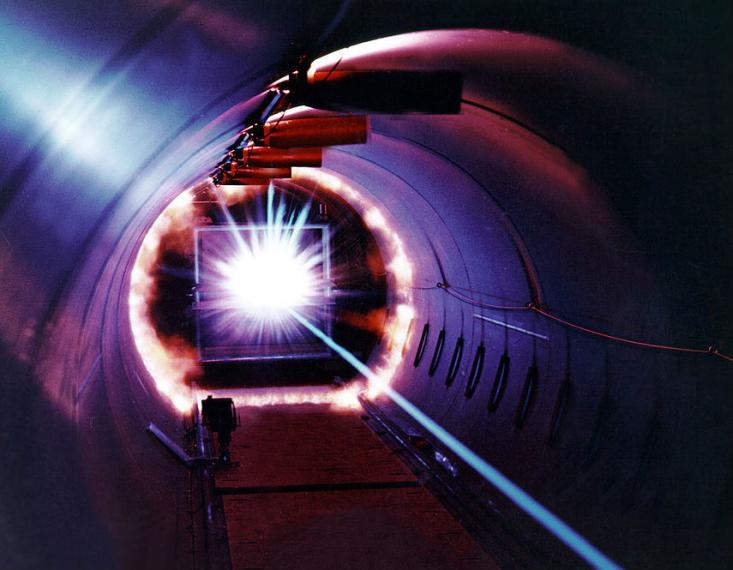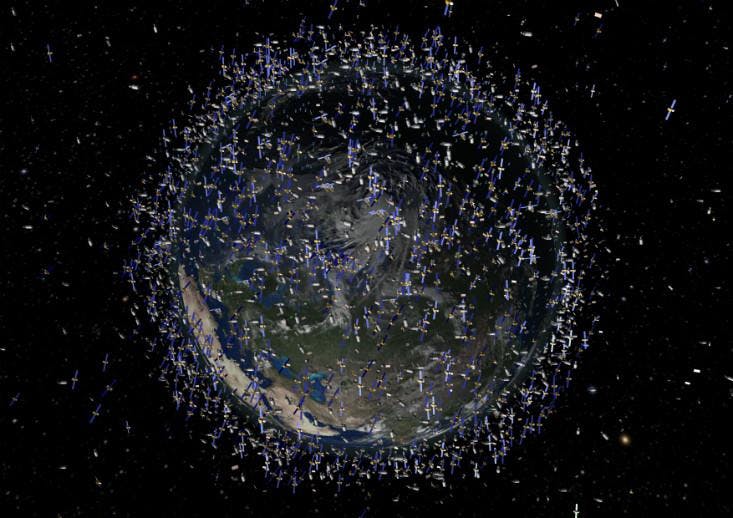
High above us, tens of thousands of kilometers above our heads, there are orbiting graveyards. They are filled with satellites that have burned through their functional lives, now “buried” in space. The graveyards are filled for a reason: A dead satellite is a dangerous one.
On the surface of Earth, gravity pulls debris and trash to the ground, where it remains still, for the most part. In space, gravity gives the same pull, but objects in orbit are always falling. With nothing to stop them, these objects fly around the Earth at astonishing speeds. Traveling faster than Mach 45 (45 times the speed of sound), the debris is deadly. When you watch a simulation, you see why.

At such speeds, orbital debris presents a big risk to anything we want to do in space. Smaller pieces of space waste could easily disintegrate satellites, and larger ones could destroy the International Space Station (ISS). So, to a graveyard orbit they go…hopefully.
Graveyard orbits are orbits significantly distanced from wherever the satellites were operating before they died. Many functional satellites spend their lives about 36,000 kilometers (22,000 miles) above the planet, in a geostationary orbit—moving in sync with the rotation of the Earth, such that it always stays directly above the same spot. The Federal Communications Commission requires that after its functional life ends, a satellite be boosted at least 300 kilometers further above the Earth. Any lower than that, and radiation from the Sun and the gravitational pull of the Earth might push it back into the path of still operational satellites. By disposing of the dead, we hope to lower the risk of collisions between them, which would create even more debris. According to one prediction, the accumulation of debris might get so bad that we couldn’t safely navigate through it, effectively locking us out of space—a gloomy condition known as Kessler syndrome.
In 2009, two satellites smashed into each other at 42,000 kilometers (26,000 miles) per hour above Siberia. It was the first impact of its kind. NASA estimated that over 1,000 pieces of debris over 10 centimeters (four inches) long were created, in addition to more even smaller pieces. Those pieces went on to crash into other satellites and debris already in orbit. Thankfully, there was no cascade, which could bring about Kessler syndrome.
The best way to render a satellite completely harmless would be to de-orbit it—to use whatever fuel remains at the end of its life to lower the orbit enough so that it will soon burn up in our atmosphere. So why don’t we do that for every satellite? In short, money.
It takes a serious investment to change the orbit of a satellite so that it will become a fireball in the sky. While we can gently push an orbiting satellite out into the graveyard, a de-orbiting maneuver requires a violent shove. In fact, it requires 140 times the velocity to shove a satellite into the atmosphere than it does to relegate it to a graveyard orbit. That massive requirement means more fuel, which means more money. In low-Earth orbit—a much lower zone, where the ISS orbits—a satellite can be simply slowed and our gravity will naturally bring it into the atmosphere. But for those satellites in geostationary orbit, out near the graveyards, it is too expensive to do so. Currently, we imagine that leaving those satellites in the graveyard is enough. We could be wrong.
According to a 2005 study published in Advances in Space Research, 103 spacecraft in geostationary orbit reached the end of their life between 1997 and 2003. Though all of them were required to be disposed of in the graveyard, only one third actually did so, while the other two-thirds either didn’t make it out far enough or were abandoned with no maneuvers whatsoever. And even when satellites are placed correctly into a graveyard orbit, space might not be as safe as we hope. Another study, published in Space Debris in 2000, concluded that merely another six to seven collisions in geostationary orbit would double the risk of additional collisions within that band. Even if graveyard orbits were always implemented, the study also concluded that the distance of the graveyard would have to be pushed back nearly 10 times the recommended distance to adequately reduce future collisions.
Though many solutions have been proposed, from “laser brooms” to “robot janitors”, there is no agreed-upon and immediately viable way to solve our debris problem. Until we have a plan, more satellites will be sent to their graveyards—with many more abandoned in the geostationary zone.
In the Disney movie WALL-E, humans have left Earth because of all the trash they filled it with. The future might hold just the opposite. If the worst happens, we could be stranded on Earth, ensnared by our own trash above us, banned from exploration. If we are too short-sighted in how we handle the corpses of our machines, they may live on as specters haunting impassable space graveyards.
Kyle Hill is a freelance science writer and blogger for Scientific American who has contributed to Slate, Wired, Popular Science, Skeptical Inquirer, and io9. He is a research fellow with the James Randi Educational Foundation, and you can follow him on Twitter under @Sci_Phile.



